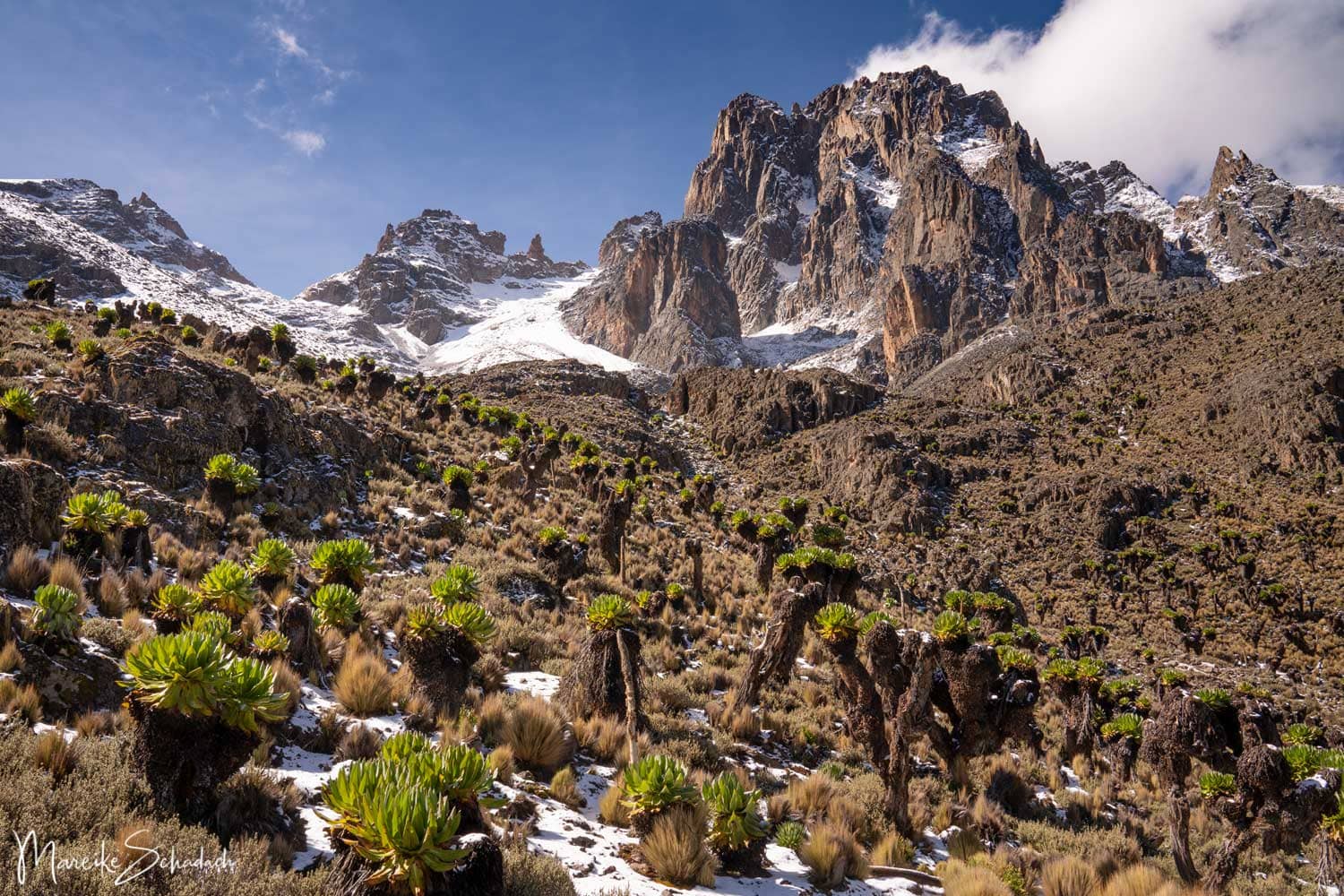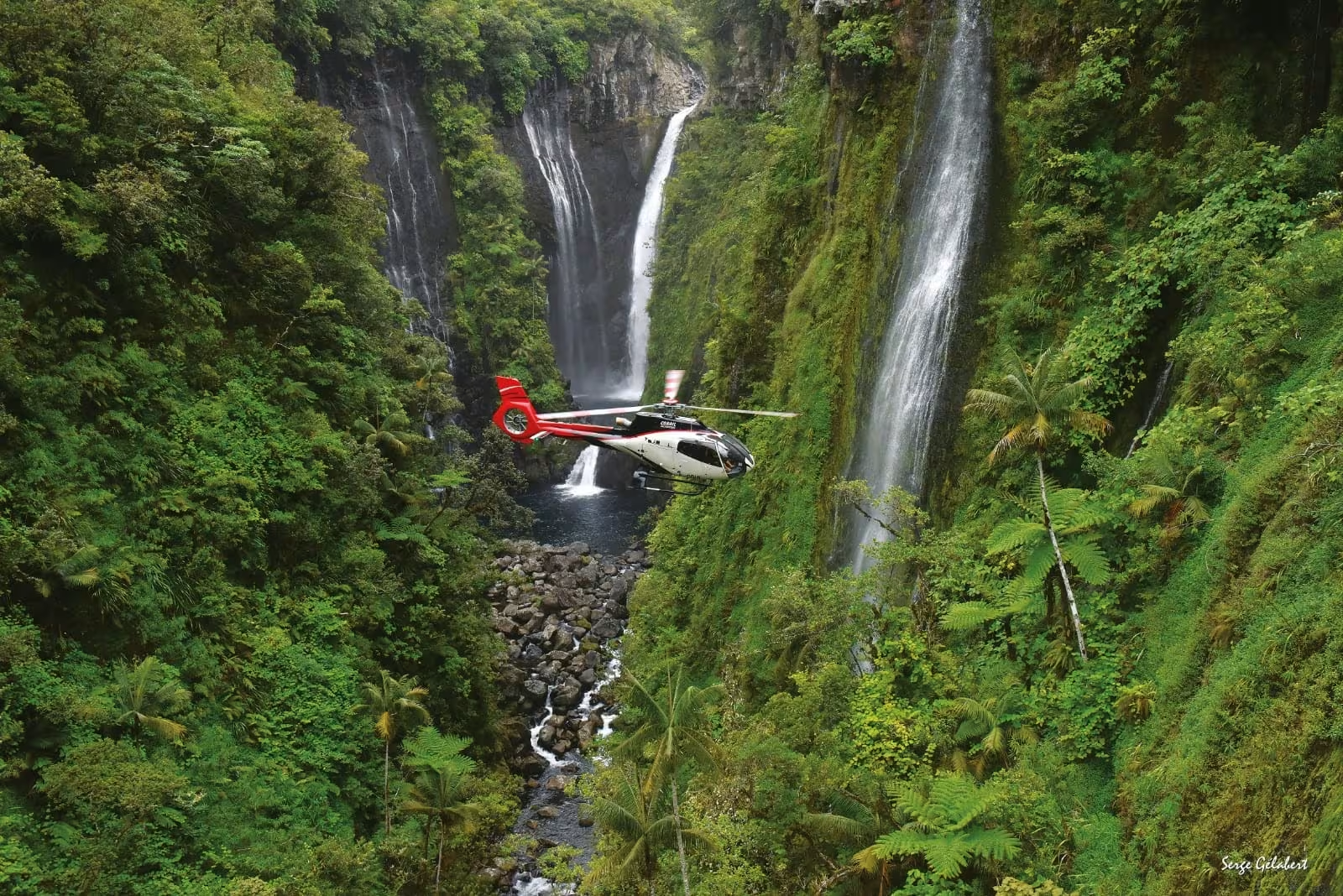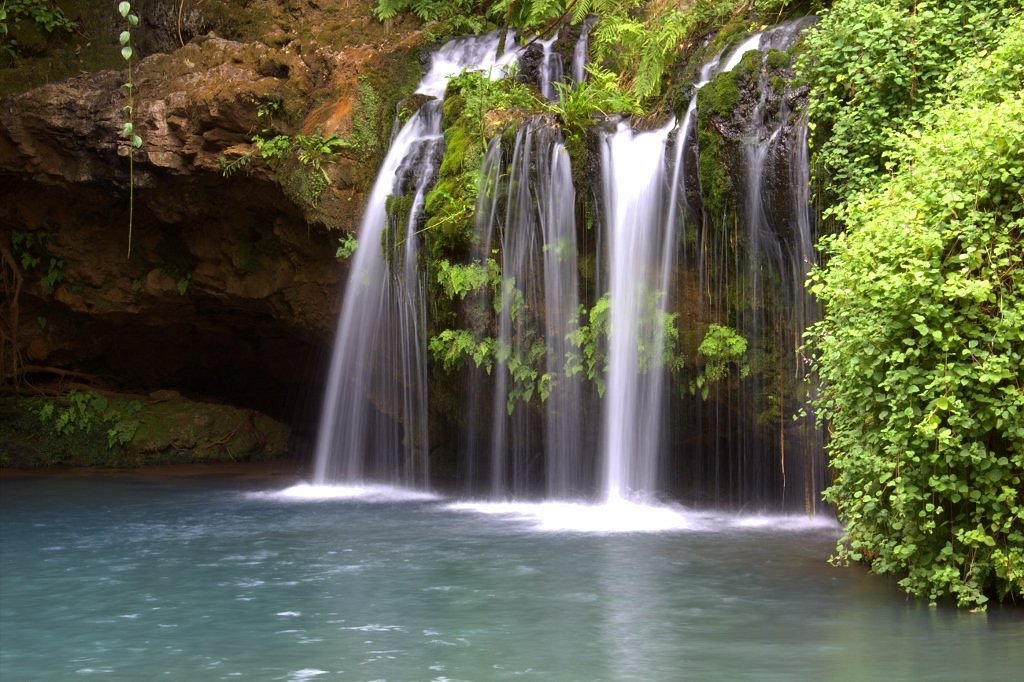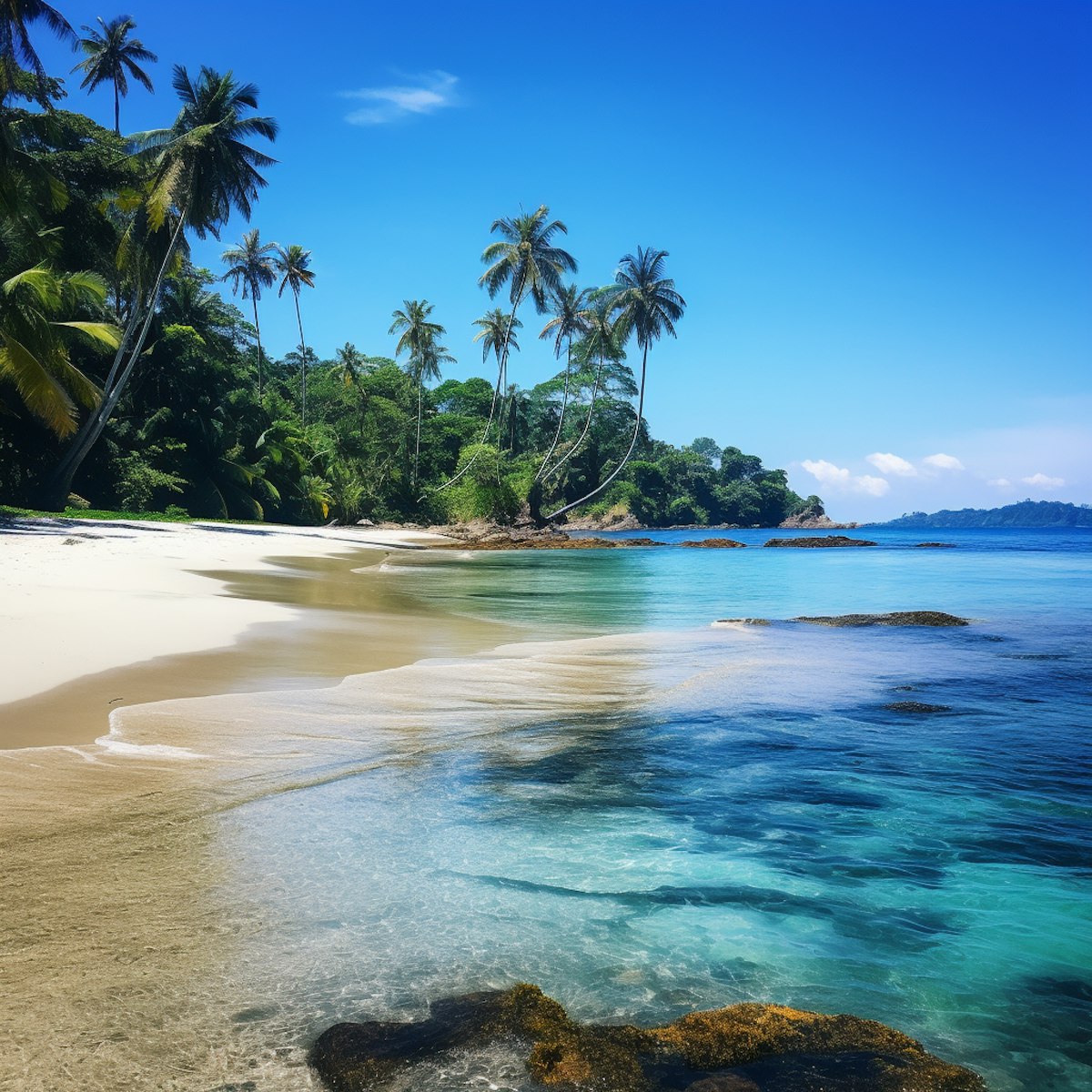"Why would you climb Mount Kenya when Kilimanjaro is right there?" The question came from a German hiker at my Nairobi hostel, fresh off his Kili summit, still wearing his certificate t-shirt. I didn't have a good answer then. After summiting Point Lenana and attempting Batian, I have several.
Mount Kenya doesn't get the fame. No "Seven Summits" status, no certificate t-shirts, no crowds of bucket-listers. What it has instead: technical climbing that'll humble you, ecosystems that change by the hour, and the kind of raw beauty that makes Kilimanjaro look like a tourist conveyor belt.
This is Africa's second-highest mountain, and it acts like it. Where Kili is a high-altitude walk (albeit a tough one), Mount Kenya demands respect. The rock is volcanic and crumbly. The weather changes from tropical to arctic in hours. And unlike Kili's single peak, Kenya offers multiple summits – from the trekking peak of Point Lenana to the technical climbing required for Batian and Nelion.
The Peaks: Choose Your Adventure
Point Lenana (4,985m): The "trekking peak." No technical skills required, but don't let that fool you. Altitude is altitude.
Nelion (5,188m): Technical climbing required. Grade IV rock, not for beginners.
Batian (5,199m): The true summit. Serious climbing, often requiring overnight bivvy on the route.
Most mortals aim for Lenana. The view of Batian and Nelion from there is worth the effort alone.
Route Comparison: Pick Your Poison
Sirimon Route (5 days) The "easiest" route, starting from the northwest.
- Gentlest altitude gain
- Drier than other routes
- Good for acclimatization
- Wildlife viewing in lower sections
- Less scenic than Chogoria
- Can be muddy in rain
- Most popular (but still quieter than any Kili route)
- **Day 1:** Sirimon Gate (2,650m) to Old Moses (3,300m) - 9km
- **Day 2:** Old Moses to Shipton Camp (4,200m) - 14km
- **Day 3:** Acclimatization day around Shipton
- **Day 4:** Shipton to Point Lenana (4,985m) to Old Moses - 25km
- **Day 5:** Old Moses to Sirimon Gate - 9km
Chogoria Route (5-6 days) The scenic route, approaching from the east.
- Stunning scenery (Gorges Valley, Lake Ellis)
- Better for photography
- Quieter than Sirimon
- Exciting 32km 4x4 ride to roadhead
- Steeper in sections
- Longer approach
- Can be very cold and wet
The Highlight: Day 3 through Gorges Valley. Imagine Lord of the Rings meets Africa – giant lobelias, crystal streams, and valleys that make you question if you're still on Earth.
Naro Moru Route (4 days) The fastest, steepest route.
- Shortest time to summit
- Infamous "Vertical Bog" (character building!)
- Direct approach
- Brutal altitude gain
- The Vertical Bog (yes, it's both pro and con)
- Higher risk of altitude sickness
Reality Check: I watched fit 20-somethings get destroyed by this route while 60-year-olds on Sirimon cruised past. Ego has no place at altitude.
The Traverse Options
Summit via one route, descend another. This is the way.
- **Classic:** Sirimon up, Chogoria down (or reverse)
- **Hardcore:** Naro Moru up, Chogoria down
- **My Pick:** Chogoria up, Sirimon down (best views while fresh)
Altitude Acclimatization: The Make or Break
Mount Kenya's altitude profile is more aggressive than Kilimanjaro's. You go high fast. Here's what works:
The Golden Rules: 1. Climb high, sleep low (actually do this) 2. Hydrate like your life depends on it (it does) 3. Diamox is not cheating (125mg twice daily, start 2 days before) 4. Listen to your body (headaches aren't always "just headaches")
- Spend a night in Nanyuki (2,400m) before starting
- Take the extra acclimatization day at Shipton/Hall Tarns
- Consider climbing Mount Kenya's little brother, Ol Doinyo Lesatima (4,001m), first
Gear: What Actually Matters
After freezing my ass off the first night, here's what you actually need:
- Sleeping bag rated to -10°C (rent in Nanyuki if needed)
- Proper boots (the rock destroys shoes)
- Rain gear that actually works
- Gloves (you'll be scrambling on frozen rock)
- Headlamp with spare batteries
- Sun protection (the equatorial sun at altitude is vicious)
- Trekking poles (helpful for descent)
- Gaiters (for the Vertical Bog)
- Balaclava (summit morning is arctic)
- Camera with wide angle (you'll want it)
- Cotton anything
- Fancy GPS (trails are clear)
- Massive first aid kit (guides carry one)
Cost Breakdown: Budget to Ballin'
- Park fees: $52/day for non-residents
- Camping: $30/night
- Guide (mandatory): $20-30/day
- Porter (optional but karma-recommended): $15-20/day
- Food and fuel: $50 total
Total: ~$300-400 for 5 days
- All-inclusive packages: $600-900
- Includes: Transport, fees, guide, porter, cook, food, basic gear
- Book in Nanyuki for better prices than Nairobi
- $1,200-2,000 for luxury operators
- Private guides, better food, premium camps
- Honestly? Not worth it. Mount Kenya is about roughing it.
Wildlife Encounters: The Unexpected Bonus
Mount Kenya isn't a zoo, but the animals didn't get the memo.
- **Elephant** (forest zone, give them space)
- **Buffalo** (dangerous, especially lone bulls)
- **Colobus monkeys** (cheeky camp raiders)
- **Rock hyrax** (cute until they eat your lunch)
- **Sunbirds** (metallic rainbow bullets)
- **Lammergeier** (bearded vulture at high altitude)
The Surreal Moment: Watching elephant cross the moorland at 3,500m while giant groundsel plants towered overhead. It felt like Africa's version of Jurassic Park.
Summit Day: The Reality
Summit day on any mountain sucks. Summit day on Mount Kenya is special sucks.
- **2:00 AM:** Wake up, question life choices
- **2:30 AM:** Start climbing by headlamp
- **3:30 AM:** Hit the scree (two steps up, one slide back)
- **5:00 AM:** Reach Austria Hut, watch sunrise paint Batian pink
- **6:00 AM:** Final push to Point Lenana
- **6:30 AM:** Summit. Cry a little. It's allowed.
The Reality: It's cold. Stupid cold. Your water freezes. Your hands stop working. The altitude makes thinking hard. But then you summit, and Kenya spreads below you from the Indian Ocean to Lake Victoria, and suddenly frostbite seems reasonable.
Technical Climbing: Batian and Nelion
For climbers, the real prizes are the twin peaks. I attempted Nelion with a guide – here's what you need to know:
- Solid multi-pitch experience
- Comfort with Grade IV/V climbing
- High altitude experience
- Two days minimum
- Professional guide (non-negotiable)
- 20 pitches of varied climbing
- Bivvy at Howell Hut (tiny, cold, unforgettable)
- Traverse to Batian (Grade III, exposed)
- Descent is often more dangerous than ascent
Reality Check: The rock quality is shit. Protection is sparse. Weather windows are tiny. This is serious mountaineering, not rock climbing at altitude.
When to Climb: Timing is Everything
January-February: Prime season. Clear, cold, stable. July-October: Second season. Colder but good. March-June: Long rains. Don't. November-December: Short rains. Possible but wet.
I climbed in September. Perfect weather for four days, then a storm that had us running for our lives. The mountain decides, not the calendar.
The Cultural Element
Mount Kenya is sacred to the Kikuyu people. Their god, Ngai, lives on the peaks. Traditional prayers face the mountain. Respect this.
- Don't litter (seriously, pack it out)
- Respect local guides' knowledge
- Understand you're on holy ground
- Consider hiring local porters (supports communities)
Training: Get Ready or Get Wrecked
Mount Kenya humbled marathon runners and destroyed gym bros. Here's what actually helps:
Cardio: Lots. Hiking with weight. Stairs. More stairs. Strength: Legs and core. You'll be scrambling. Altitude: If possible, sleep high beforehand. Mental: The ability to suffer and smile.
The Differences from Kilimanjaro
Having done both, here's the real comparison:
- Higher (5,895m vs 5,199m)
- More famous
- More crowded (300+ people summit daily in season)
- More expensive ($2,000+ typical)
- Single route to summit
- Better infrastructure
- More beautiful (subjective but fight me)
- More varied terrain
- Technical options
- Fraction of the crowds
- Half the price
- Wilder experience
Post-Climb: Nanyuki and Recovery
- Gear rental shops
- Good restaurants (Dormans Coffee for wifi)
- Barracks Hotel (where British Army trains)
- Cold beer that tastes like victory
Recovery Tip: Sagana for white water rafting. Nothing clears altitude headache like Class V rapids.
The Harsh Truths
Success Rate: Lower than Kili. The altitude gain is aggressive. Weather: Can turn lethal fast. I saw snow in September. Rescue: Limited compared to Kilimanjaro. Don't fuck around. Fitness: You need it. This isn't a walk.
Why Mount Kenya Wins
Kilimanjaro is an achievement. Mount Kenya is an adventure.
On Kili, you follow the conga line, sleep in crowded camps, and summit with hundreds. On Kenya, I saw maybe 20 other climbers in five days. We had Shipton Camp almost to ourselves. Summit morning was our small group, the guides, and the mountain.
The diversity destroys Kili too. You start in farmland, push through bamboo forest where elephants hide, emerge into Heath covered in bizarre plants, traverse moorland that looks like Scotland on steroids, and finally hit the alpine desert below glaciated peaks. It's like hiking through five different planets.
But the real reason Mount Kenya wins? It's still wild. Guides tell stories of leopard in the forests. Weather can trap you for days. The mountain feels alive, untamed, unpredictable. It's what Kilimanjaro must have been before the crowds.
The Call of the Mountain
That German hiker was wrong. You don't climb Mount Kenya instead of Kilimanjaro. You climb it because it offers something Kili can't – a true mountain experience without the circus.
I summited Point Lenana as the sun lit Batian's north face. Below, Kenya stretched endlessly. Above, the technical peaks taunted. I knew I'd be back for them. That's Mount Kenya's trick – it shows you enough to know you've seen something special, but holds back enough to ensure you return.
Six months later, I was back attempting Nelion. I'll be back again for Batian. Because once you've felt Mount Kenya's mix of beauty and brutality, accessibility and wildness, everything else feels like compromise.
The mountain is waiting. It doesn't care about your schedule, your fitness, or your ego. It offers its summit to those who earn it, and memories to everyone who tries. In a world of manufactured adventures and Instagram moments, Mount Kenya remains real.
Just don't expect a certificate t-shirt at the end.



